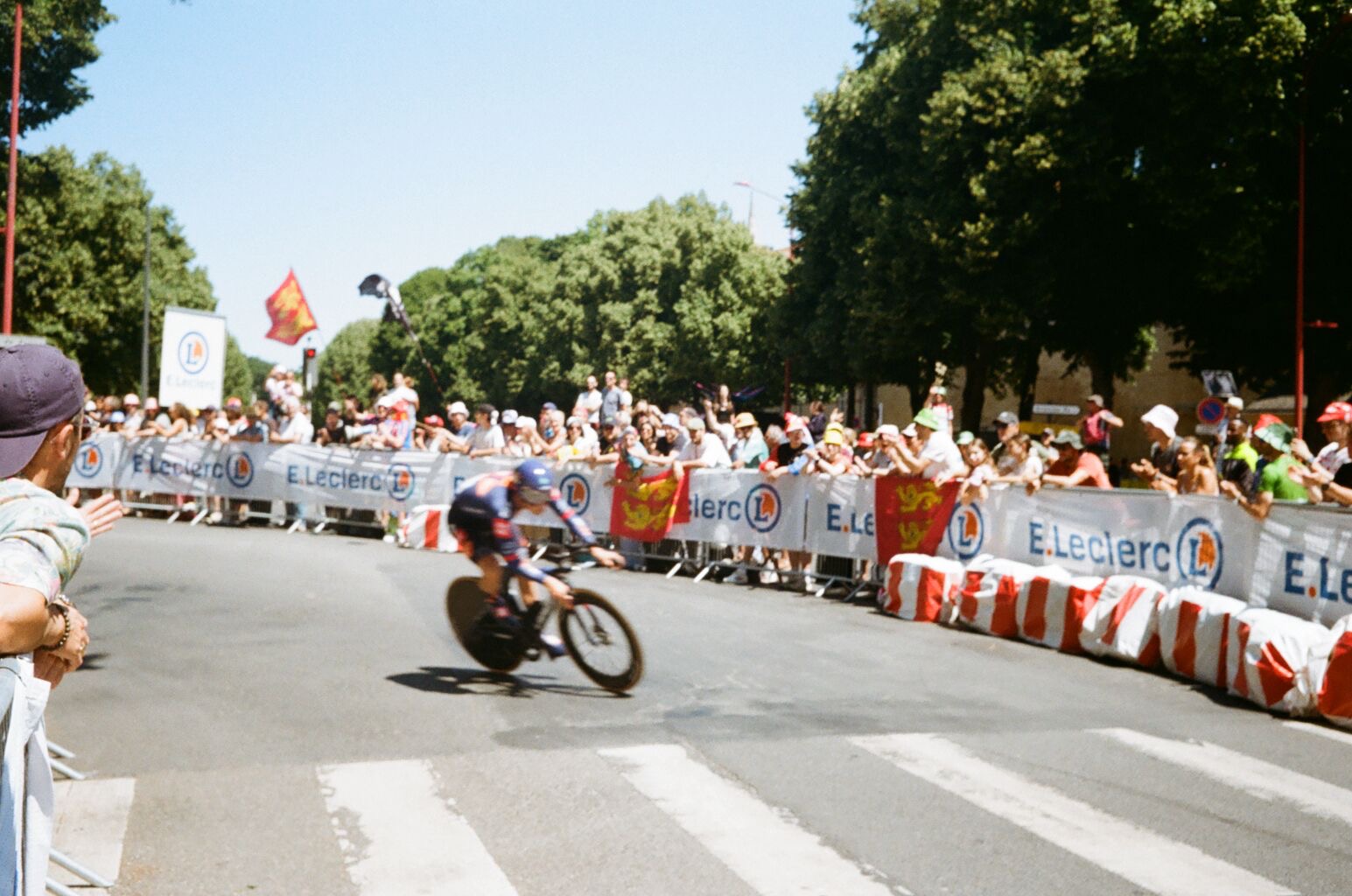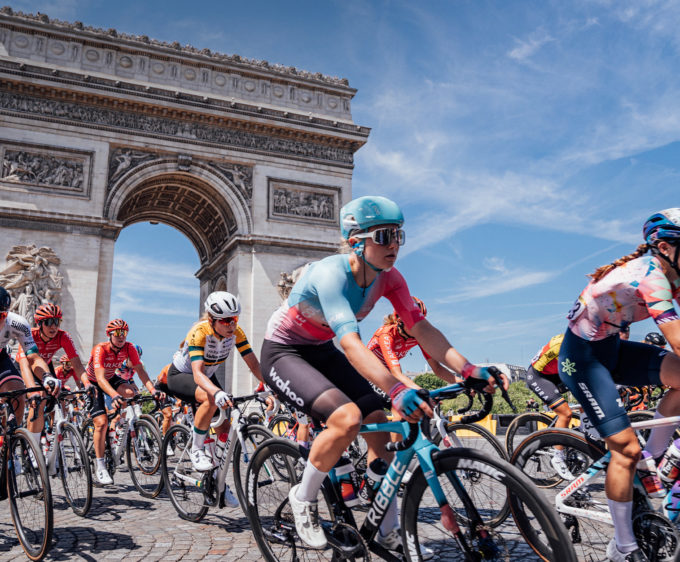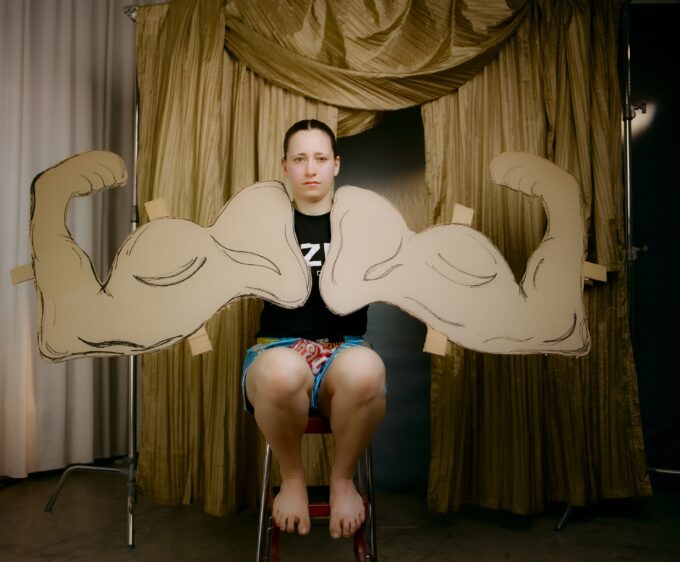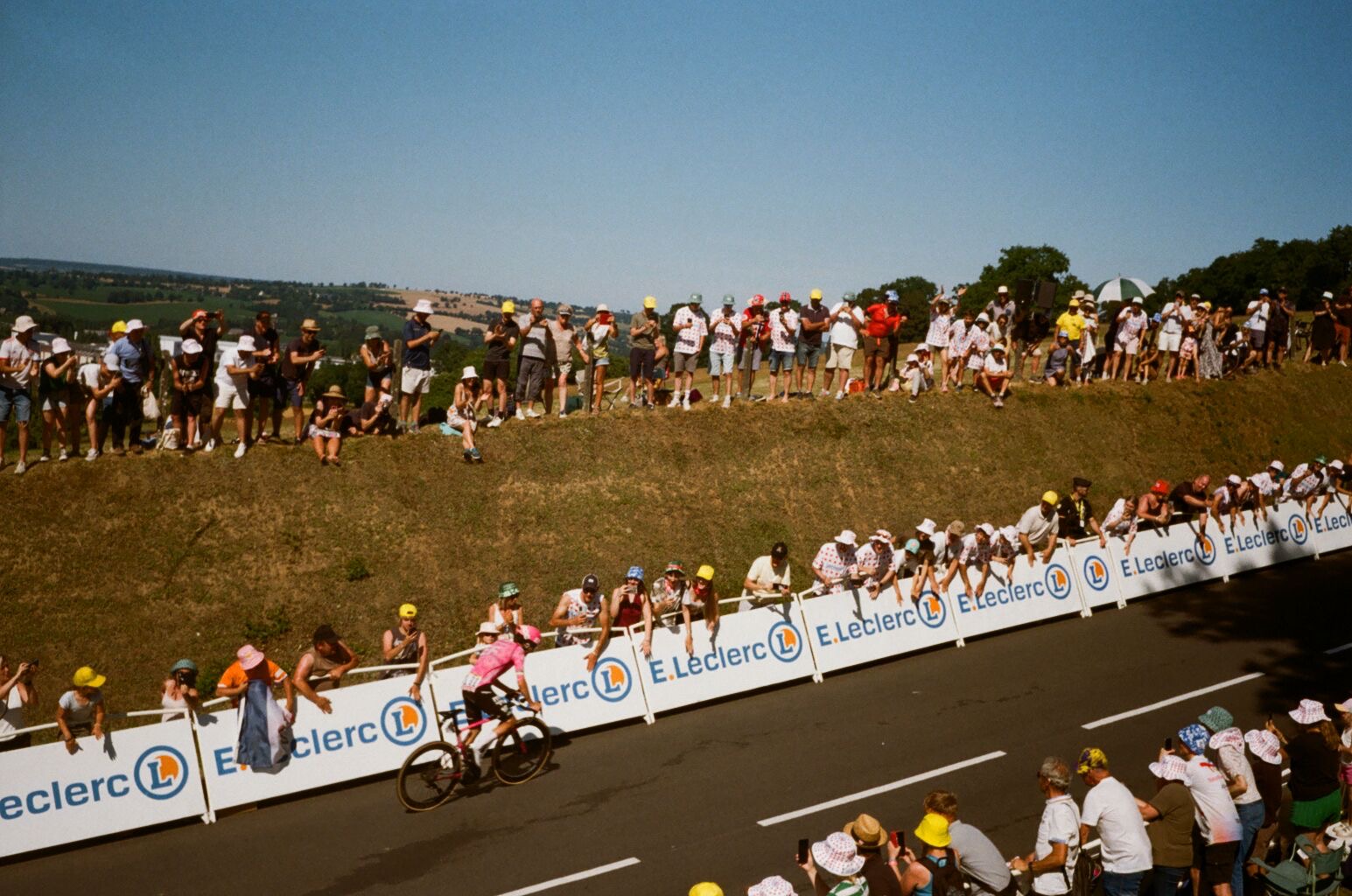
On Tour
With the Tour de Femmes 2025 in full swing, I spent part of this summer at the Tour de France to understand why that race still holds such a colossal place in cycling culture, and to imagine what the future could look like for women’s competitive cycling.
By Jo Cornish
It’s hard to grasp the scale of the Tour de France until you’re standing on a roadside in rural Normandy, waiting for a blur of wheels to rush past.
So why am I sitting on the side of what looks like a country lane, eating a croissant and tracking breakaways with barely any signal? Because the Tour de Femmes has just begun, but I’m here at the men’s Tour de France, an event so deeply woven into France’s fabric that the whole country literally stops. TVs are rolled out onto pavements outside cafés, schools close early, and villages and towns decorate their streets with flags and banners. Caravans and campervans arrive from all corners of Europe, turning quiet lanes into festive gathering spots, whilst children clang cowbells and wave miniature yellow jerseys.
Women’s cycling is already huge, full of talent, drama and momentum, but the Tour de France, with its century-plus legacy, embodies the kind of tradition and national celebration that women’s racing is still building towards. This is the story of chasing those fleeting seconds on the roadside, through the eyes of a woman and a fan of sport. Women’s sport. Men’s sport. Youth sport. All the sport!
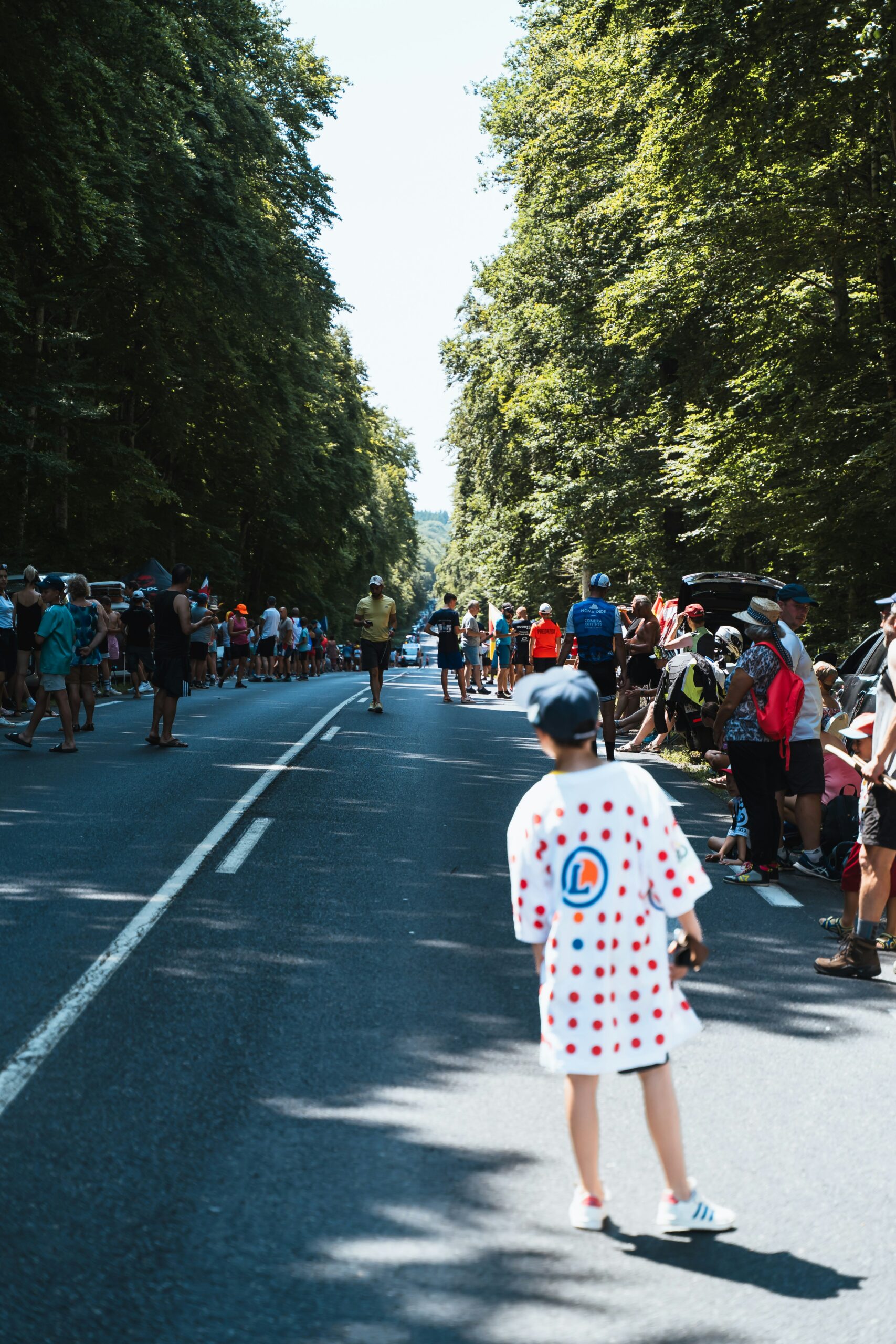
La Chasse
Cycling, for me, has always been a shared passion. I ride with men, women, friends, and family, with no lines drawn in the road. But the Tour de France exists on an entirely different scale. It draws around 12 million roadside spectators every year and reaches hundreds of millions on screen. With over a century of history, it attracts major sponsors, government backing, and a vast global audience.
By contrast, the Tour de Femmes, launched in 2022, is still growing. It draws thousands of fans, has expanding broadcast reach, and features athletes who are every bit as elite, tough and tactical. At the moment, the commercial and cultural spotlight still shines more brightly on the men’s race, but that won’t always be the case. With rising investment, better coverage and a generation of riders who are not just ready but impossible to ignore, the women’s peloton is building something with serious momentum. The racing is already world-class. What’s still catching up is the scale.
That’s why I went to the men’s race. Not because the men’s race matters more, but because its scale helps explain what the women’s peloton is pushing towards. I wanted to see that scale for myself, to feel it, to stand by the roadside and imagine what it might look like when women’s cycling gets everything it deserves.
I’ve watched the Tour de France on television with my dad since I was in school. It was our summer ritual, complemented by our laps around Richmond Park. ITV4’s highlight coverage turned July evenings into something approaching religious experience from the comfort of a sofa. But seeing it through a screen, no matter how devoted your attention, obviously can never capture the fullness of its outstanding beauty.
In 2014, my sisters and I all gathered at our parents house to watch ASO’s La Course, thrilled that finally there was a race for women. Despite being just one day, I remember feeling almost proud that this prestigious race had finally recognised women’s cycling at the highest level.
This summer, I felt especially tired of watching everything through a screen. Tired of experiencing the world as content, reduced to a highlight reel, ad or being told I need to be “de-influenced” by someone with expensive running shoes and no self-awareness. So, I wanted to get onto a real stretch of road waiting for a flash of something that mattered, even if only briefly. Most of my friends had their summer holidays booked and with my boyfriend off at stag do’s seemingly every weekend, the thought of proper French rosé and a nostalgic trip with my dad just made sense.
So we packed light, booked a ferry, and set out to chase the world’s greatest travelling circus…
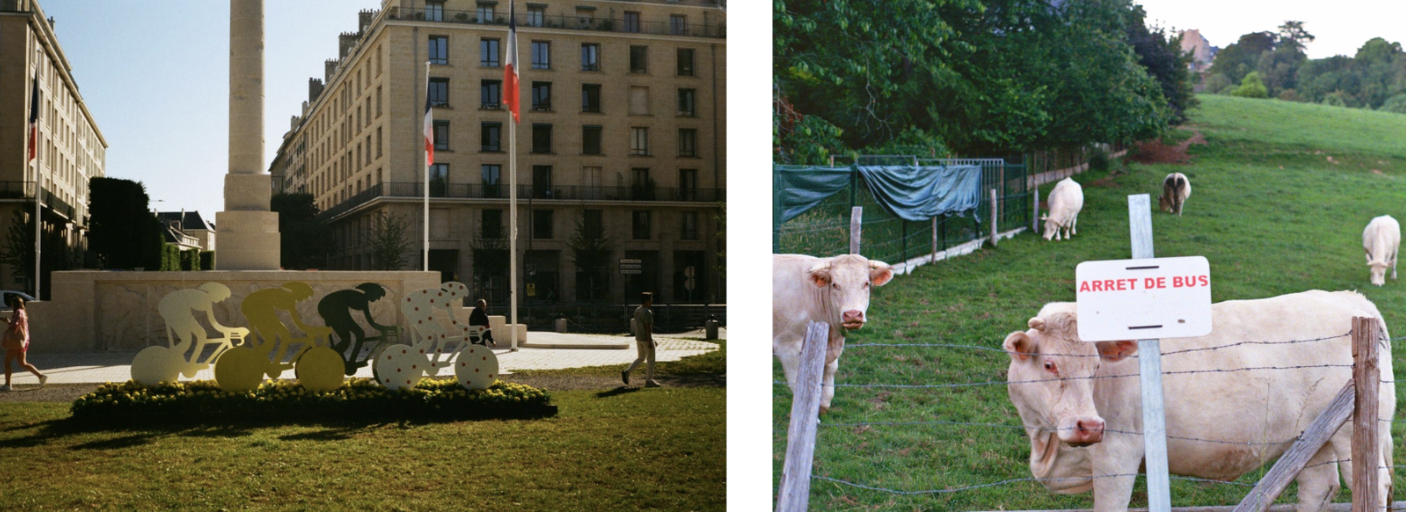
Le Voyage
What follows is part travelogue, part love letter to effort. All for eight seconds on a roadside in Normandy.
Unlike most sporting events, the Tour de France demands a different kind of planning. There’s no stadium, no ticket, just a roadside, a hilltop, or a corner to perch on. I found myself poring over Google Street View whilst sitting on the Jubilee Line, dragging the little yellow man along the route, scanning for the perfect spot. I made notes: where the road narrowed, where there might be a bend, where the peloton would be forced to slow, anything to maximise my glimpse.
We’d opted for the night ferry to Caen, bound for a conveniently placed campsite tucked between stages 5 and 6 of this year’s race. Standing in the Portsmouth terminal, bleary-eyed and slightly sunburnt already, I wondered: Does anyone else go to this much effort? Seven hours on a ferry, another hour or two of driving, all to sit under the midday sun and watch a group of angular, (mostly) European men whizz by at 60km/h.
fanfare!
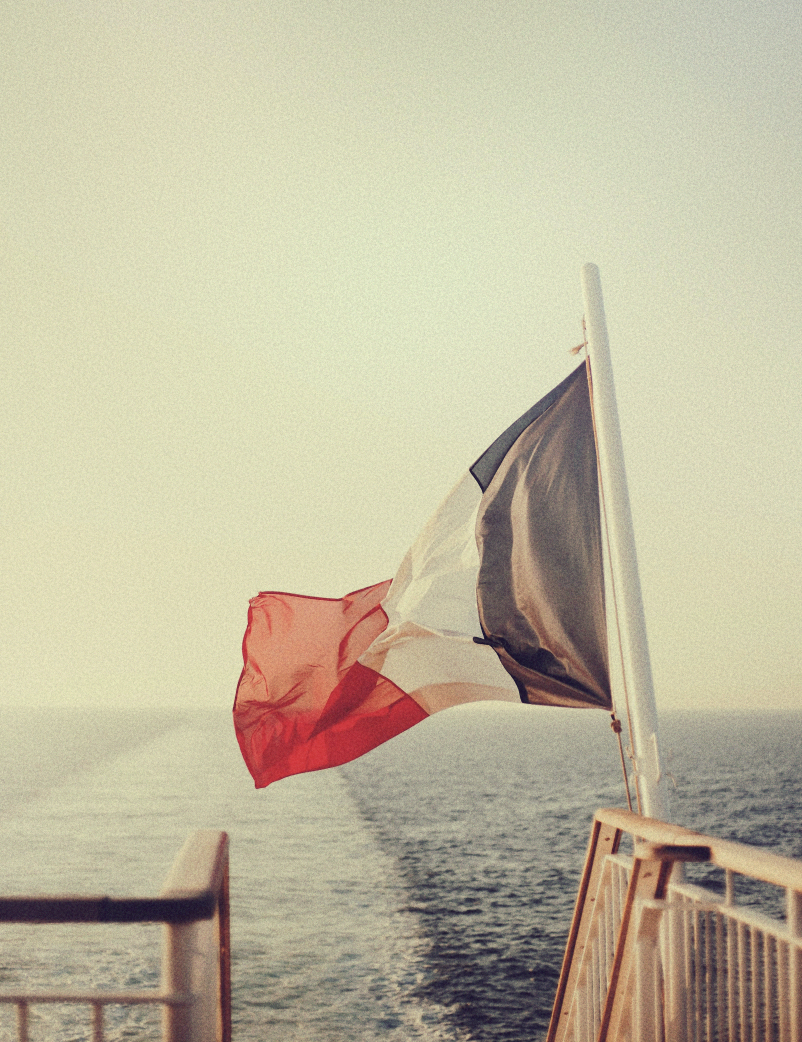
I’ve followed professional cycling closely for years now, learning its tactics, decoding the riders’ decisions with every pedal stroke, memorising sponsorship sagas and team dramas. I’ve indulged in the sport completely and utterly. And yet, I had never, not once, met someone in real life who shared this obsession.
So when I looked around at the queue for the ferry, a parade of lycra, expensive bikes, clip-clopping cleats on concrete, tan lines, and those silly little cycling caps no one looks good in, I felt a curious mix of recognition and revelation. It held up a mirror. Do I look like this?
All around me were men, women and children in full kit, adjusting saddles, unwrapping snacks, discussing gradients like they were planning a heist. But mostly, and I’ll admit this is out of character, I was thrilled. Thrilled at the chance to talk to a stranger about something I’ve bored so many loved ones with, people who smile politely as I explain breakaways and puncheurs, just to spare my feelings.
The sleeping arrangements on the ferry left a lot to be desired. I was too warm, then far too cold. By 4am, I’d given up entirely. I prized the door open to the deck and stood there, alone, watching the sun rise over the Channel. I briefly romanticised my life, thought about why I went to shake that mate of a mate’s hand, when they clearly were opting for a fistbump last month, and just as I began to spiral into thoughts about the distinct lack of joy or momentum in my professional life, land appeared.
The mythical land. The storied nation of France stood before me, glowing gently in the distance.
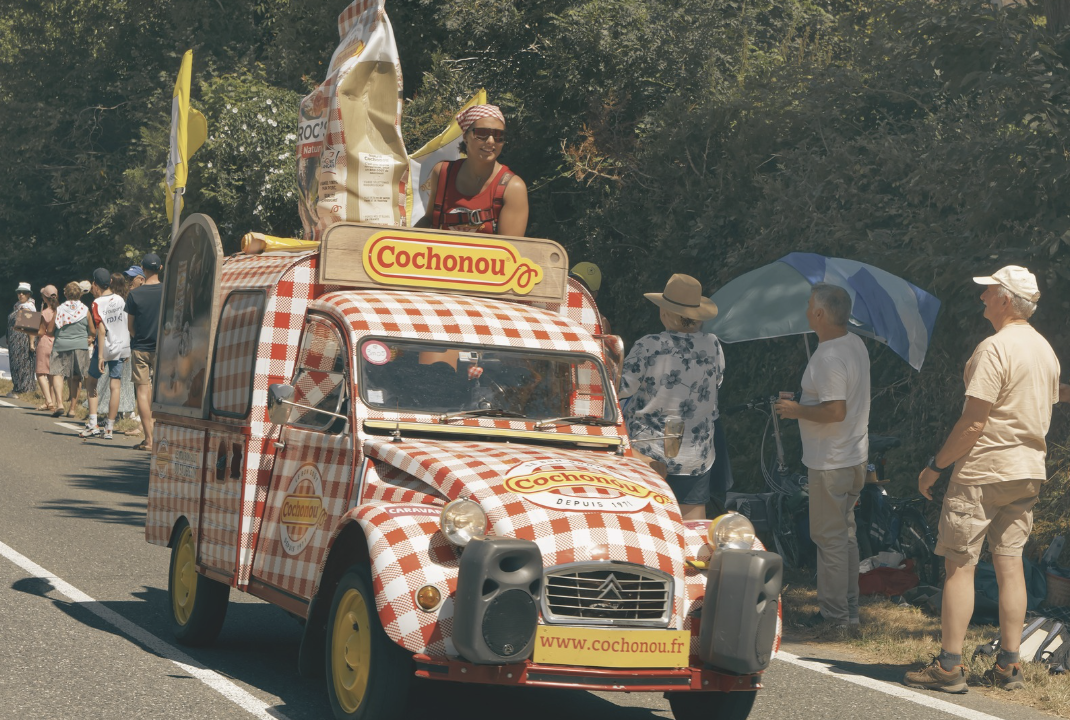
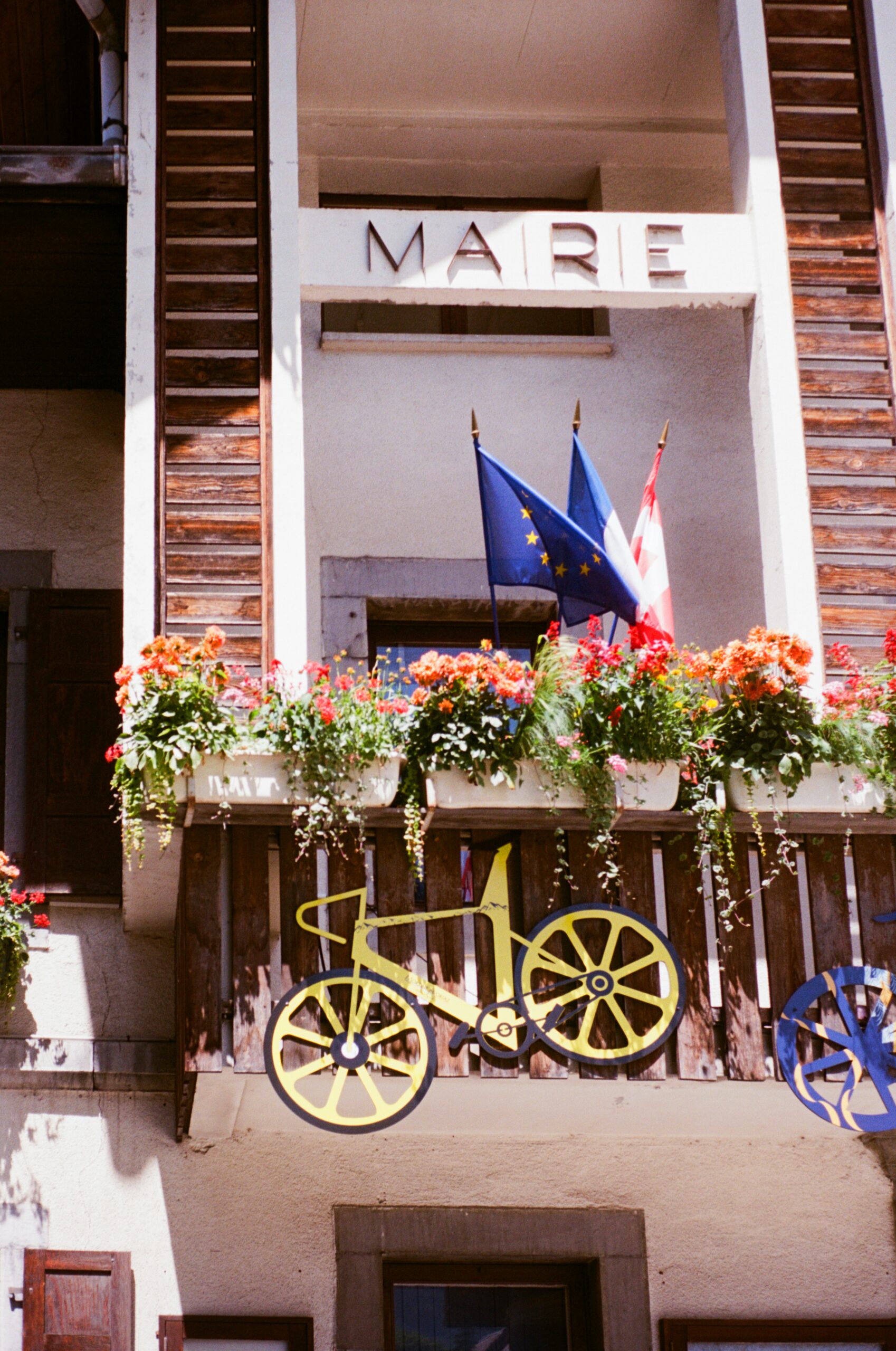
Bienvenue en France!
The Tour is a travelling show but one dressed in sunlight, skinsuits, and cowbells. France has to feel different when it’s Tour time. It’s not loud, it’s buzzing. Calm and electric all at once. I was embarrassingly excited to see actual road closure signs, donning an official Le Tour de France logo. It was now real and it was causing long diversions but it didn’t bother me.
Within hours of stepping off the ferry, I’d developed what I can only describe as a continental inflection. Nothing too dramatic, just a subtle shift in cadence, a tendency to add “eh?” to the end of sentences as if I’d been cycling these roads my whole life and I was completing media duties for Eurosport 2. “Beautiful day for the Tour, eh?” I’d say to myself, as if I hadn’t spent years watching it from a sofa in a grey and uncharming satellite town just north of London.
On the morning of stage 6, our campsite had gotten busier. A Danish couple, a group of Dutch men and a few ambiguously European cycling fanatics were gathering around their tents. It was parodying my own thoughts of what it would be like to see the Tour in person.
By late morning, and just a short walk from a clammy tent, the road begins to fill: campers wedded into their positions, campervans perfectly situated, families with comfortable fold-out chairs, the locals really know how to do it properly and I looked across enviously at the never ending picnics. I was a novice, I was just happy to be there.
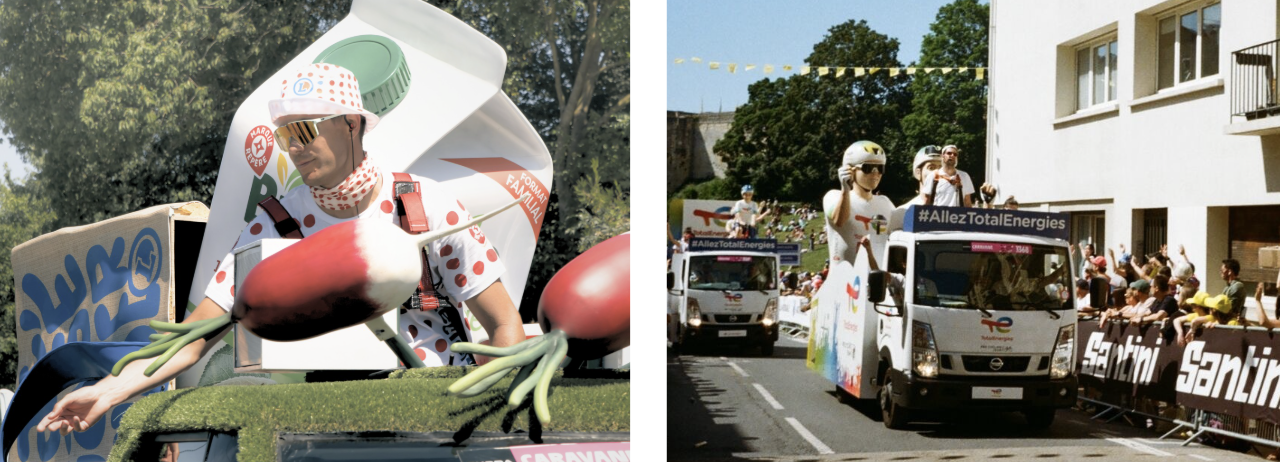
La Caravane
And then comes the caravane, that absurd procession of corporate vans turned euro-rave floats, hurling cheap tat into the air. For half an hour, it’s a pure fever dream of French consumerism. People elbow each other for keychains, I saw an actual man stealing actual candy from an actual baby, there were pensioners ripping sponsored goods from Petrochemical companies out of the air and celebrating wildly. It is, without question, completely ridiculous and so much fun.
Yet, what struck me most, though, was the lack of tribalism. You don’t come to a Tour stage because your team is playing, you come because the Tour is here. Everyone is just as excited as you, and you can’t really put your finger on why?
The waiting intensifies as the afternoon wears on. I’m tracking manically with barely any signal the live positions of the riders, refreshing frantically on my phone. “I think there’s a breakaway,” I announce to no one in particular. Hoping to maybe start a conversation with an aficionado. The sun pounds down, the tarmac is warm, there’s nowhere comfortable to sit and I’m terrified of losing my good spot, so I hunker down. I haven’t come this far, waited this long, to find myself staring at the back of some obnoxiously placed home-counties based commuter who’s halfway through composing his LinkedIn post about leadership lessons from professional cycling.
I’m positioned at the top of a categorised climb. I can see partly down the road, but the real intel now comes from sound, heads turning, cheers building, but this time different cheers. Not the hollow celebration of catching a sachet of washing-up liquid from the caravane, but something richer, more guttural. The police motorbikes and team-car stream is intensifying, more whistling, more honking, more noise in general.
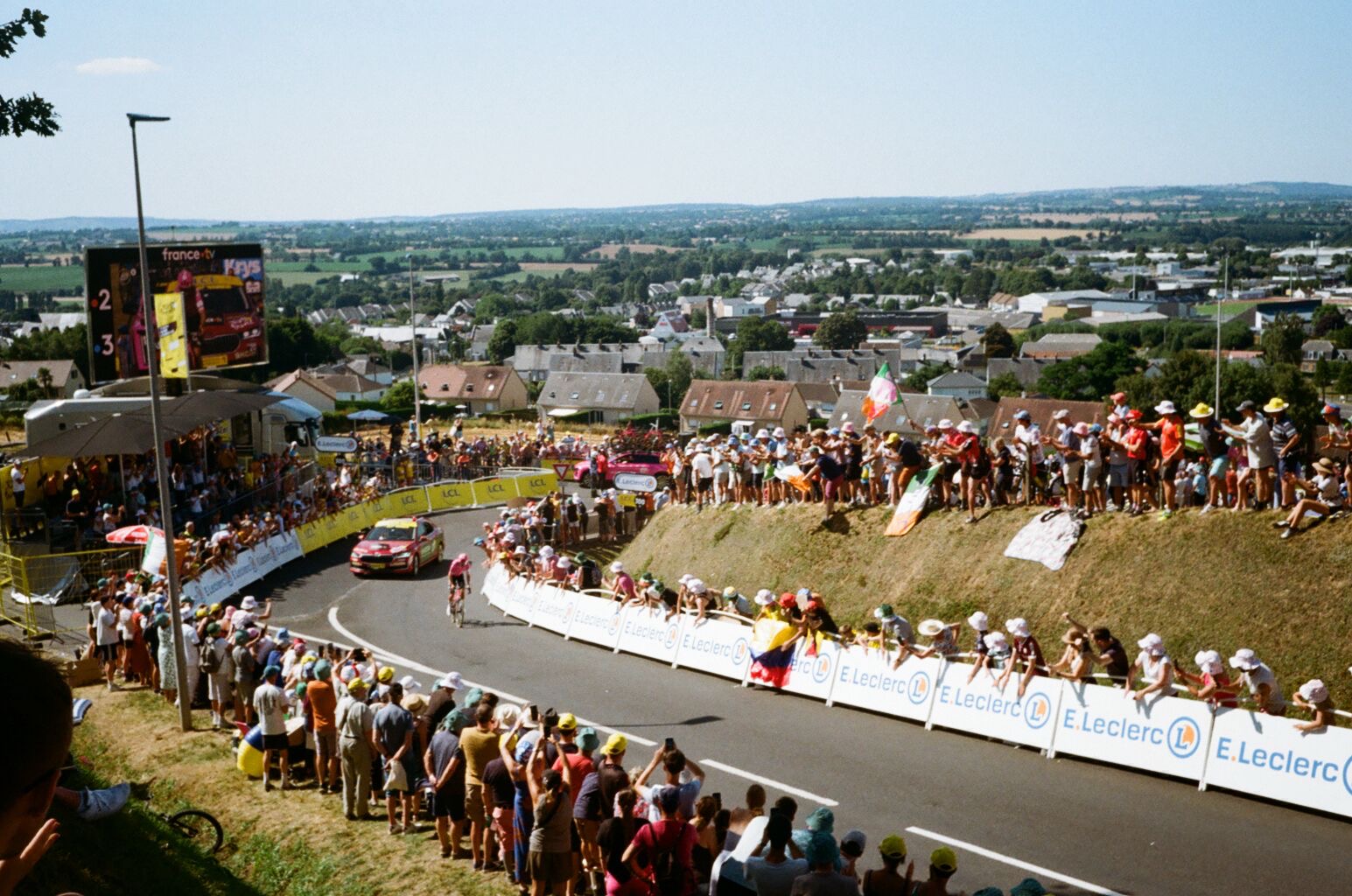
circus
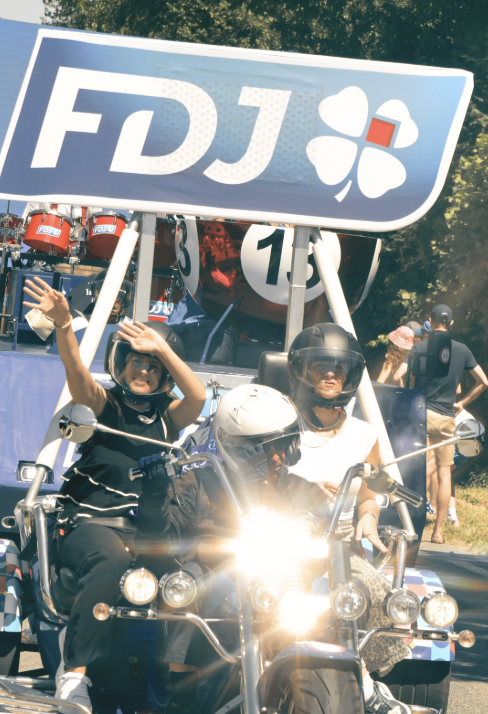
8 Secondes
Maybe you’re not meant to see it for too long. Maybe those images need to flash before your eyes, not linger, nor allow for inspection. Maybe you shouldn’t be allowed to focus on it too clearly. The whole ordeal should overwhelm you, immersing you, but never fully and completely indulge you in its spectacle. I’m already twisting my neck to follow but they’re gone, swallowed by the curve of the street. They’re somebody else’s moment now. The act rushes over you, indivisible, luminous, then gone. You’re left unsure of what you saw, only certain that you felt it.
The road returns to being just a road. Cars will drive here tomorrow. The barriers will come down, the crowds will disperse, and this stretch of tarmac will go back to carrying commuters and delivery vans.
Tired, sunburnt, almost drunk by the whole experience. I try to recreate those seconds. Yet, I suppose the Tour probably isn’t meant to be captured, only witnessed. It arrives, it compels, it departs. And you’re left standing on the roadside, slightly bewildered, completely changed, already planning your return.
My ferry departs that same evening, I am thrusted back to reality, I sit on the platform at Fratton station, waiting for the train to carry me and my bike back to London. There’s no space for my bike on the first few trains that come through, the man on the platform tells me I shouldn’t even have “that thing” on trains “really.” The continental inflection has already faded, the tan lines will follow.
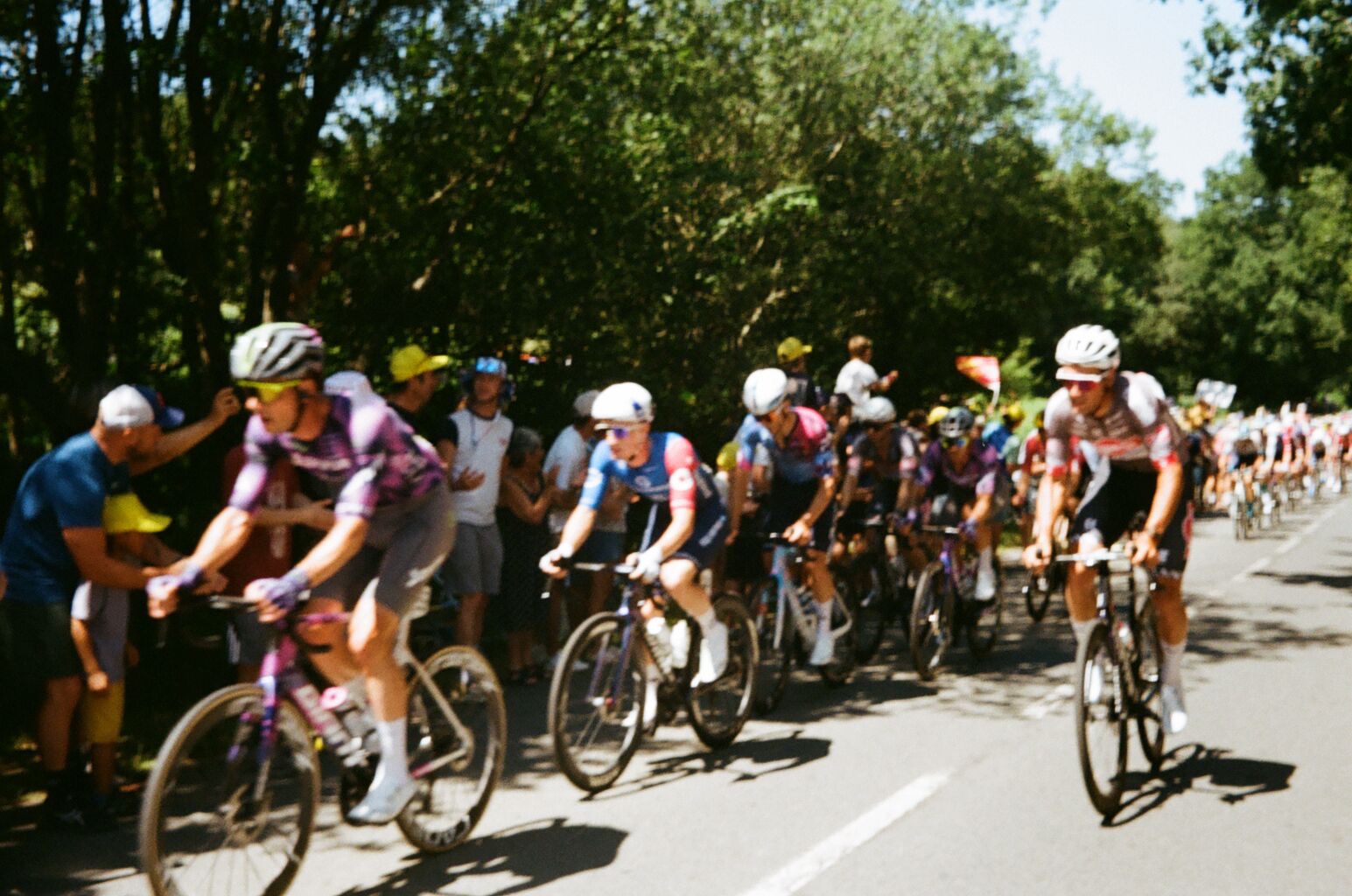
Maintenant pour les femmes…
Next time, I’ll be back for the Tour de Femmes. I want to witness that same magic unfold for the women’s peloton, to see the crowds, the chaos, the keychains, the climb. Not because it isn’t already brilliant, but because now I’ve felt what happens when a whole country lines the road. The Tour de Femmes has the talent, the drama, the momentum, and it’s only getting stronger. I want more people to show up, to tune in, to care. I want that for every woman who rides, and for every girl watching from a sofa in a grey satellite town, wondering where she fits in and what the road ahead might look like for her.
Watch, follow, track and find out more about the Tour de Femmes, 2025 here
